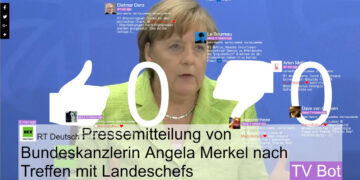net_based award 2018
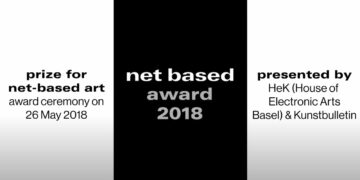
Le net_based award a pour objectif de promouvoir une pratique artistique sur Internet. Voici les dix projets qui ont fait partie de la sélection finale du net_based – Preis für netzbasierte Kunst en 2018.
La lauréate du prix principal, d’un montant de 10 000 CHF, était Olia Lialina pour son œuvre Self-Portrait.
Ted Davis
OSCILLDRAW_NotRecognized, 2017
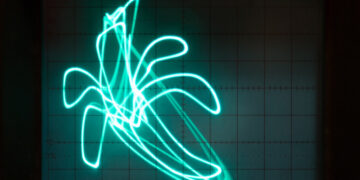
OSCILLDRAW_NotRecognized, by the Basel-based American artist Ted Davis, uses the online tool Quick, Draw!, an experimental project developed by Google in which a neural network tries to recognize objects drawn by users. The project aims to help improve machine learning in the field of drawing recognition, worldwide. Davis takes drawings that Google’s artistic intelligence cannot recognize and incorporates them into his work, reproducing them using analog oscillographs. User-defined software that the artist developed converts the drawings into audio signals that are fed into the oscilloscope in XY mode and reproduce the image. For this work, which is based on a large-scale research project involving millions of participants worldwide, Davis translates the results back into an aesthetic form reminiscent of early computer graphics.
Oevre: https://www.instagram.com/p/Bd...
Artiste: http://teddavis.org
Sebastian Schmieg
I Will Say Whatever You Want In Front Of A Pizza, 2017

This work uses the presentation app Prezi with a great deal of irony and humour, to tell the story, in first person singular, of a cloud worker at a time when humans relieve algorithms for menial tasks... Playing with paradoxes, the loss of demarcation between that which is on- and offline, the aesthetics of presentation software screenshots, those from the web and other social networks, Sébastian Schmieg questions the deeply algorithmic nature of man, in a human society that views the development of artificial intelligence as a menace.
Oevre: http://i-will-say-whatever-you...
Artiste: http://sebastianschmieg.com
Libby Heaney
Lady Chatterley’s Tinderbot, 2016-17
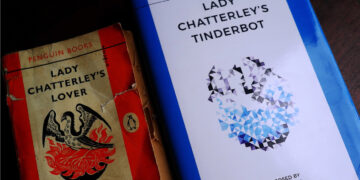
Lady Chatterley’s Tinderbot is the unlikely cross between the explicit 1928 novel Lady Chatterley’s Lover by D.H. Lawrence and the application for sexual encounters Tinder. The artist Libby Heaney has programmed a bot to converse with Tinder users by sending them excerpts of the novel, soliciting responses, surprising and scintillating questions, thus confusing the protocols that dictate communication via such an app. A selection of the resultant exchanges is presented on a touchscreen and as a book.
Beyond the encounter between two different expressions of seduction, the one an expression of amour and the other a more compulsive form, this work questions the relation to the other in this unique realm that is the game of seduction, whether human or bot.
Oevre: http://libbyheaney.co.uk/lady-...
Artiste: http://libbyheaney.co.uk
Disnovation.org
Predictive Art Bot (IV), 2015-2018
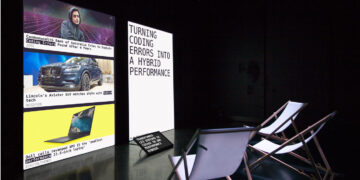
Every four hours, seven days a week, the collective Predictive Art Bot offers to human perspicacity a new concept, original, impertinent, silly, indeed actual. It invites other artists, via its Twitter account (@predartbot), to appropriate these associations of ideas, to interpret them and why not transform them into works of art. To do so, this algorithm combines current affairs and contemporary issues in order to foresee, in a randomised fashion, new trends at the intersection between the various domains of art, activism, economics, medicine and further transhumanism. This approach, which integrates chance and interpretation within its functioning principle, is not unlike the surrealists’ cadavres exquis or Bryon Gysin and William Burroughs’ cut-ups. With this project, Nicolas Maigret, Maria Roszkowska and Jérôme Saint-Clair lead us to examine our process of inspiration and our collaboration with “intelligent agents”, which are ever more involved in our choices and decisions.
Oevre: Link
Artiste: http://disnovation.org
Olia Lialina
Self-Portrait, 2018
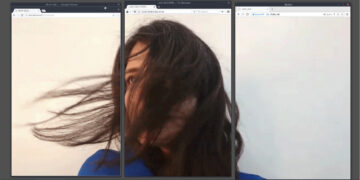
With Self-Portrait, Olia Lialina continues her series of “networked” portraits, which explores the relationship between the work and its technological context, highlighting the ever-changing network conditions and our position within this one. After having played with variations in speed of transmission on the web (Summer, 2013) and having questioned the consequences of an abandonment of net neutrality (Best Effort Network, 2015), Olia Lialina invites us with her latest work to think of the web in its various dimensions, beyond its best-known public face. To contemplate this self-portrait, not less than three web browsers are required: a classic browser (Firefox, Chrome, Safari, etc.), an anonymised and secure browser (Tor) and a “peer-to-peer” browser (Beaker). By juxtaposing these three windows open onto different parts of the network, we can recompose the fragmented face of the artist whose hair is blowing in the wind with ever so slight discrepancies in the movement.
Oevre: http://olia.lialina.work
Artiste: http://art.teleportacia.org/olia.html
Reading Club et al. (Annie Abrahams, Emmanuel Guez)
Reading Club, 2017
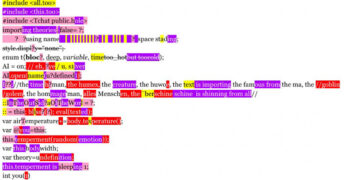
Reading Club sees itself as an online venue for collaborative reading and writing, both of which occur within a precisely defined framework: Abrahams and Guez invite «readers» to read an existing text and to comment on and rewrite it within a set number of characters. The public also can get involved, reading and commenting in a chat field. Performances already have been held in various languages (sometimes simultaneously), including code. All are documented on the website, recorded over time. What makes this real-time language game so attractive are its interweaving of reading and writing on the net; the questions it raises about notions of authorship; and last but not least its humorously competitive character. Reading Club takes its place among the oeuvre of Abrahams, a pioneer in network performance who continues to explore aspects of communication under the Internet’s telematic conditions. She continues this exploration in a multitude of locations and with changing participants, using the tools of physical (tele-)presence, objects or - as in ReadingClub – text.
Oevre: https://readingclub.fr
Artiste: https://aabrahams.wordpress.com
Benjamin Grosser
Go Rando, 2017
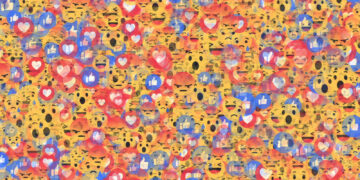
What’s on your mind? asks Facebook’s casual invitation to post something new. Actually Facebook gains insight into the ‘mind’ or thoughts of each individual reader thanks to nuanced profiles that advertisers use in turn as the basis for targeted ads. But given its total of two billion subscribers, Facebook also has good insight into the collective ‘mind’ of users, which amounts to a gigantic, dynamic body of data just waiting to be mined. Benjamin Grosser has already realised several projects relating to Facebook. For instance, his ‘Textbook’ allows one to use Facebook wholly without visual content, his ‘Facebook Demetricator’ gets rid of all kinds of statistics, for example, on ‘likes’. And his new project Go Rando is a response to the relatively new option of being able to react to another user’s post with an emoticon rather than a simple ‘like’. Emoticons allow us more nuanced communication. In return the Facebook company acquires more sophisticated data: quantifiable emotions. Grosser encourages us to provide less easily evaluated data. If we install Go Rando, the emotive responses ranging from love to rage are assigned at random. Over time our emotional profiles flatten out, tendencies become less predictable. (Yet exceptions are possible; for instance, you can avoid posting a weeping emoticon when your best friend gives birth.) Ultimately it’s a matter of the extent to which we allow our emotions and our minds to be commodified.
Oevre: https://bengrosser.com/project...
Artiste: https://bengrosser.com
Jan Robert Leegte
Google Maps as a Sculpture, 2017

Works that crossover between real and virtual worlds are not uncommon. Not many of them manage to blend them together almost seamlessly. Jan Robert Leegte’s Google Maps as a Sculpture is one of those works. Technically it is a perfectly smooth cube covered with high resolution images of a Chinese mining region taken from Google Earth. Experientially however the block appears as a virtual element lost between worlds. The object looks oddly out of place, a cut out photoshopped physically into a gallery space. While the title is a reference to Youtube as a Sculpture by Constant Dullaart, a shrine-like installation of the Youtube loading icon, Leegte’s Google Maps as a Sculpture has a different feel and focus. Jan Robert Leegte’s work playfully emphasises the materiality of digital objects and structures, reminding us of their prominent role in our experience. Often the artist playfully toys with the viewers expectations, creating tromp l’oeil type effects. In Google Earth as a Sculpture Leegte however widens his scope as he puts the reality of Google’s view of our planet into question.
Oevre: https://www.leegte.org/work/go...
Artiste: http://www.leegte.org
Owen Mundy
I Know Where Your Cat Lives, 2014-in progress

Millions of people readily publish sensitive data about their personal lives on a daily basis. Owen Mundy’s I Know Where Your Cat Lives is a humorous reminder this is not a good idea. Mobile phones attach location tags to photos. Using the possibilities provided by popular photo sharing sites for gathering and handling data such as this Mundy created a map of the homes of a million cats and their owners worldwide. This resulted in a web based work that quickly became a hit on social media. I Know Where Your Cat Lives makes clever use of the popularity of cat pics on social media to spread its message. Owen Mundy is an artist, designer and programmer. His work often has a critical edge. Another piece entitled Commodify.us, a collaboration with Tim Schwartz, aimed to give people the opportunity to sell their data rather than give it away for free. Like Commodify.us, I Know Where Your Cat Lives revolves around raising public awareness of the urgent political issues in the information age. With I Know Where Your Cat Lives Mundy succeeded in this with flying colours. He manages to subtly but convincingly allert millions of people worldwide to the recklessness of their behavior: the data the artist used can be applied to create maps in order to any object of affection people take pictures of, including kids.
Oevre: https://iknowwhereyourcatlives...
Artiste: www.owenmundy.com
